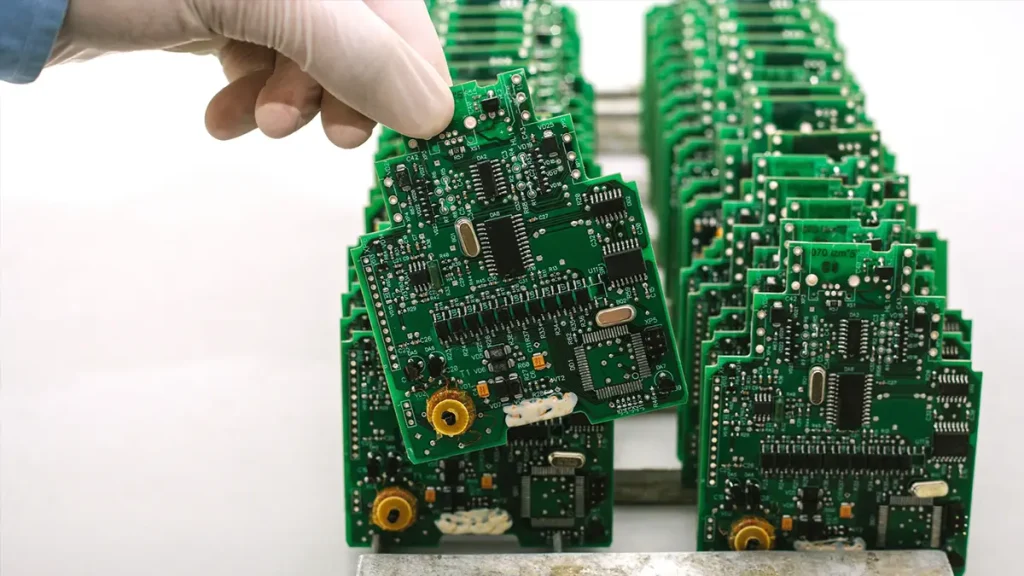
With the evolution of automotive electrification, BCD technology is becoming increasingly crucial in the field of automotive semiconductors.

With the evolution of automotive electrification, BCD technology is becoming increasingly crucial in the field of automotive semiconductors.
With the evolution of automotive electrification, BCD technology is becoming inc
With the evolution of automotive electrification, BCD technology is becoming increasingly crucial in the field of automotive semiconductors. BCD stands for Bipolar - CMOS - DMOS. As the name implies, this technology integrates three types of devices, namely bipolar transistors, complementary metal - oxide - semiconductor (CMOS), and double - diffused metal - oxide - semiconductor (DMOS), on the same chip. By combining the high - drive capability of bipolar transistors, the high - integration and low - power consumption of CMOS, and the high - voltage and high - current characteristics of DMOS, it can reduce the chip area and improve performance. BCD technology was first introduced by STMicroelectronics in 1985. At that time, the process node was 4 microns and the voltage capability was 20V. It was mainly developed to meet the demands for high - performance analog, power management, and high - voltage capabilities in electronic applications. By 2010, the process node had reached 0.11 microns and the voltage capability had been extended to 1200V to meet the requirements of high - voltage applications. Currently, STMicroelectronics has introduced a 90nm BCD technology that integrates eNVM memory and supports 3D stacking technology. In addition, more manufacturers are promoting the development of BCD technology. For example, Chipown's BCD + SOI technology eliminates the latch - up effect through deep - trench isolation, achieving 1200V breakdown voltage and 10MHz high - frequency drive in new - energy inverters, reducing the volume by 60% compared with traditional solutions. During the development of BCD technology, in addition to the incorporation of eNVM, some passive devices have been introduced, including high - precision resistors, capacitors, and inductors, continuously improving the performance of analog circuits. The DMOS structure has also undergone several improvements and iterations to achieve higher current density and lower on - resistance, thereby improving power conversion efficiency.

Furthermore, SOI technology is being more frequently combined with BCD technology. BCD - SOI improves the anti - interference ability through deep - trench isolation (DTI) and is suitable for high - reliability scenarios.
Therefore, considering the integration of high - voltage, high - current, high - degree of sophistication, and high - drive capabilities, BCD technology is particularly well - suited to the needs of automotive electrification. In fact, in traditional fuel - powered vehicles, BCD technology is used in the power drive and signal processing parts of the ECU, supporting functions such as fuel injection and ignition timing, and can handle the high - voltage and high - current requirements for engine operation.
In the transmission control unit, BCD technology is used to drive the solenoid valves and actuator chips in the transmission, responsible for managing the shift logic of the automatic transmission and providing high - voltage and high - current support.
In electric vehicles, the BMS is one of the cores of the battery system. BCD technology is applied to BMS chips to handle the high - voltage and high - current requirements of the battery pack, monitor, and manage the battery state.
The main function of the OBC (on - board charger) is AC - DC conversion, which also requires high - voltage and high - current conversion and control. Power - drive chips, PMICs, etc. on the OBC will use BCD technology.
In the future, with the trend of automotive electrification, the BCD process node will be further reduced, enabling support for higher voltages and larger currents to meet the needs of future high - voltage applications. To increase integration, BCD technology will also integrate more functions, such as sensor interfaces, communication modules, and intelligent control units, achieving a higher level of system integration, especially in the fields of automotive electronics and industrial automation.
With its high - voltage integration, low - power consumption, and high - reliability, BCD technology has become the core manufacturing technology for automotive chips. With the popularization of new technologies such as 800V high - voltage platforms and intelligent chassis, BCD technology will continue to make breakthroughs in automotive - grade power devices, embedded storage, and multi - domain controllers, promoting the development of automotive electronics towards higher integration and lower costs.


Leave a Reply
Your email address will not be published. Required fields are marked *